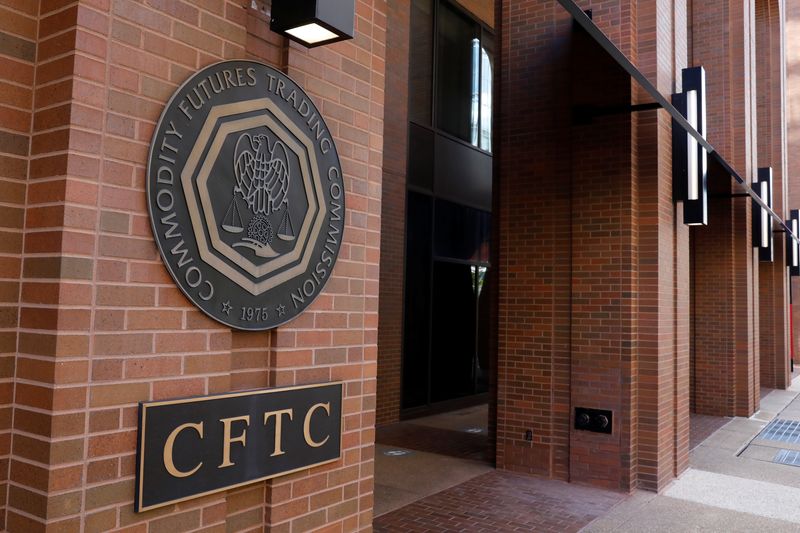By Jamie McGeever
ORLANDO, Fla. (Reuters) -A key part of the U.S. yield curve is the most inverted in decades and for hedge funds, enough is enough.
Commodity Futures Trading Commission positioning data show that speculators are placing wagers that the historic gap between 10-year and three-month yields will start to shrink.
This is reflected in two standout figures from the latest CFTC report - the smallest net short three-month 'SOFR' rate futures position in over two years, and the largest 10-year Treasury futures net short position since 2018.
Together, they point to a belief that implied U.S. interest rates in the coming months won't rise much, if at all, and 10-year yields will move higher.
This would help reverse the extraordinary flattening of the 3-month/10-year curve, which last week inverted by as much as 140 basis points, the most since 1981.
CFTC speculators cut their net short position in three-month Secured Overnight Financing Rate (SOFR) futures to just 9,077 contracts in the week through Jan. 17.
It is the smallest net short since December 2021, and considering that short position exceeded 1 million contracts in early September, it is virtually neutral.
Funds also increased their one-month SOFR net long position to over 67,000 contracts, the largest long since August. Momentum indicators are now the most bullish since late 2020.
Hedge funds take positions in short-dated U.S. rates and bonds futures for hedging purposes, so the CFTC data are not reflective of purely directional bets. But they are a pretty good guide.
A short position is essentially a wager that an asset's price will fall, and a long position is a bet it will rise. In bonds and interest rates, yields and implied rates fall when prices rise, and move up when prices fall.
TACTICAL TRADE?
Meanwhile, speculators increased their net short 10-year Treasuries futures position by 133,699 contracts, the biggest weekly shift since last October, to 545,000 contracts.
That's the largest collective bet against 10-year bonds - and for higher yields - since October 2018.
From an economic fundamental perspective, however, a steeper yield curve is unlikely to be driven by a higher 10-year yield, at least if the incoming U.S. economic data is any guide.
Services and manufacturing sector purchasing managers data, regional manufacturing indexes, and barometers of consumer sentiment are all at levels typically associated with past recessions.
Longer-dated borrowing costs have plunged far below short-term yields, a sign investors are expecting growth and inflation to weaken so much that the Federal Reserve will ultimately have to ease policy.
From a tactical perspective, however, it makes more sense. Traders may be taking some of the froth out of the tightening priced into the next few Fed meetings, and may also be thinking that the curve, like a stretched rubber band, must surely snap back.
The starkest example lately is the 3-month/10-year yield curve, which has flattened at lightening pace - as recently as October the curve had a positive slope, and in May last year it was almost 230 bps positive.
Fed officials - including Vice Chair Lael Brainard and Governor Christopher Waller, two of the most influential policymakers after Chair Jerome Powell - continue to make the case for further rate hikes, albeit at a slower pace.
There is no indication that rate cuts are in the Fed's 2023 script, yet 'SOFR' futures continue to price in around 50 bps of easing this year.
Many analysts reckon the flattening bias will remain dominant this year. Hedge funds may fundamentally agree, but right now they are betting on at least a short-term bout of steepening.
(The opinions expressed here are those of the author, a columnist for Reuters.)
Related columns -
Fed hangs tough as wage growth gets real again
Simple twist of FAIT - Fed scents inflation victory
Funds start 2023 short dollars, eyeing U.S. rate peak
(By Jamie McGeever; Editing by Jacqueline Wong)
